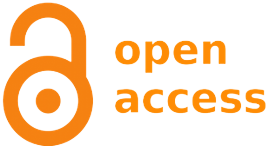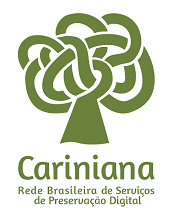Interpretation of heritage sources in history education
DOI:
https://doi.org/10.5433/2238-3018.2012v18n1p187Keywords:
History Education, Heritage Education, Heritage sources, Historical evidenceAbstract
Connecting History Education and Heritage Education, this research aim to develop educational activities related to use of objects and heritage sites, grounded in a systematic process and methodological criteria. Through a descriptive empirical study and a mainly qualitative approach, it was intended to seek out how students infer from heritage sources, taking part in history teaching and learning activities. Data here reported refer to a PhD study in which specific instruments were applied to a sample of 87 students (40 students attending year 7 and 47 students from year 10), from several secondary schools of Guimarães municipality, in northern Portugal, and their history teachers. The analysis of data followed an increasingly refined categorization process in order to find out a model of students' conceptual progression and of teachers' profiles concerning the use of heritage sources and types of historical consciousness. This study highlights the interest of approaching heritage sources as historical evidence, and not only as illustration or information, in history teaching and learning activities.
Downloads
References
ASHBY, R. O conceito de evidência histórica: exigências curriculares e concepções dos alunos. In BARCA, I. (Org.). Educação Histórica e Museus. Actas das Segundas Jornadas Internacionais de Educação Histórica. Braga: CIEd, Universidade do Minho, 2003, p. 37-57.
ASHBY, R. Desenvolvendo um conceito de evidência. Educar em revista, número especial, 2006, p. 151-170.
ASHBY, R.; LEE, P.; SHEMILT, D. Putting principles into practice: teaching and planning. In DONOVAN, M. S.; BRANSFORD, J. D. (Eds.), How students learn: History in the classroom. Washington DC: The National Academies Press, 2005, p. 79-178.
BARCA, I. Estudos de Consciência Histórica em Portugal: perspectivas de jovens portugueses acerca da História. In BARCA, I. (Org.). Estudos de Consciência Histórica na Europa, América, Ásia e África. Actas das Sétimas Jornadas Internacionais de Educação Histórica. Braga: CIEd, Universidade do Minho, 2008, p.47-53.
CAINELLI, M. Educação Histórica: perspectivas de aprendizagem da história no ensino fundamental. Educar em revista, número especial, Curitiba: Editora UFPR, p. 57-72, 2006.
CHAPMAN, A. Asses, archers and assumptions: strategies for improving thinking skills in history in years 9 to 13. Teaching History, 123, p. 6-13, 2006.
CHOAY, F. A Alegoria do Património. Lisboa: Edições 70, 2000.
COLLINGWOOD, R. The idea of History. Oxford: Oxford University Press, 1946.
COLLINGWOOD, R. A ideia de História. 9 ed. Lisboa: Editorial Presença, 2001.
COOPER, H. O pensamento histórico das crianças. In BARCA, I. (Org.). Para uma Educação Histórica de qualidade. Actas das Quartas Jornadas Internacionais de Educação Histórica. Braga: CIEd, Universidade do Minho, 2004, p. 55-74.
COOPER, H. Aprendendo e ensinando sobre o passado a crianças de três a oito anos. Educar em revista, número especial, 2006, p. 171-190.
DICKINSON, A. K.; GARD A.; LEE, P. J. Evidence in history and the classroom. In DICKINSON, A.; LEE P. (Eds.), History teaching and historical understanding. London: Heinemann, 1978, p. 1-20.
LEE, P. 'Walking backwards into Tomorrow': historical consciousness and understanding History, 2002. Consultado em Março 7, 2011, em http://www.cshc.ubc.ca.
LEE, P. Nós fabricamos carros e eles tinham que andar a pé: compreensão da vida no passado. In BARCA, I. (Org.). Educação Histórica e Museus. Actas das Segundas Jornadas Internacionais de Educação Histórica. Braga: CIEd, Universidade do Minho, 2003. p. 19-36.
LEE, P. Putting principles into practice: understanding history. In DONOVAN, M. S; BRANSFORD, J. D. (Eds.), How students learn: history in the classroom. Washington, DC: The National Academies Press, 2005, p. 31-77.
LEVSTIK, L.; HENDERSON, A.; SCHLARB, J. Digging for clues: an archaeological exploration of historical cognition. In ASHBY, R.; GORDON, P.; LEE, P. (Eds.), Understanding history: recent research in History Education. London: Routledge Falmer, 2005, p. 37-53.
LOWENTHAL, D. The past is a foreign country. Cambridge: C. University Press. 1999.
LYNCH, K. What time is this place? Cambridge, Massachusetts: The MIT Press, 1998.
MCCULLAGH, C. B. The truth of history. London: Routledge, 1998.
NAKOU, I. Exploração do pensamento histórico das crianças em ambiente de museu. In BARCA, I. (Org.). Educação Histórica e Museus. Actas das Segundas Jornadas Internacionais de Educação Histórica. Braga: CIEd, Universidade do Minho, 2003, p. 59-82.
NAKOU, I. Museums and History Education in Our Contemporary Context. International Journal of Historical Learning, Teaching and Research, 6(1), 2006. Acesso em 29 de abril de 2012, http://www.centres.ex.ac.uk/historyresource/journalstart.htm.
PAIS, J. M. Consciência histórica e identidade: os jovens portugueses num contexto europeu. Oeiras: Celta Ed., 1999.
PINTO, H. O triângulo Património-Museu-Escola: que relação com a Educação Histórica? In SCHMIDT, M. A.; BARCA, I. (Org.). Aprender História: Perspectivas da Educação Histórica. Ijuí: Ed. Unijuí, 2009, p. 271- 302.
PINTO, H. A melhor forma de conhecer a história de Guimarães é ir explorar': compreensão histórica de alunos portugueses sobre evidência patrimonial. In SCHMIDT, M. A.; CAINELLI, M. (Org.). Educação Histórica: Teoria e Pesquisa. Ijuí: Ed. Unijuí, 2011a, p. 167-192.
PINTO, H. Educação histórica e patrimonial: conceções de alunos e professores sobre o passado em espaços do presente. Tese de doutoramento em Ciências da Educação, especialidade de Educação em História e Ciências Sociais, apresentada à Universidade do Minho, 2011b.
PINTO, H; BARCA, I. "Leitura" de fontes patrimoniais como evidência histórica: perspetivas de alunos. In BARCA, I. (Org.). Educação e Consciência Histórica na Era da Globalização. Braga: CIEd, Instituto de Educação, Universidade do Minho, Associação de Professores de História, 2011, p. 79-96.
PINTO, H; BARCA, I.Uso de fontes patrimoniais e consciência histórica de alunos e professores portugueses. XII Congresso Internacional das Jornadas de Educação Histórica Consciência Histórica e as novas tecnologias da informação e comunicação. Universidade Federal do Paraná, Curitiba, 18-21 de julho de 2012.
RAMOS, F. R. A danação do objecto: o museu no ensino de história. Chapecó: Argos, 2004.
RÃœSEN, J. Razão histórica. Teoria da História: os fundamentos da ciência histórica. Brasília: Editora UnB, 2001a.
Downloads
Published
How to Cite
Issue
Section
License
Copyright (c) 2012 História & Ensino

This work is licensed under a Creative Commons Attribution 4.0 International License.
História & Ensino adota a licença CC-BY esta licença permite que os reutilizadores distribuam, remixem, adaptem e criem a partir do material em qualquer meio ou formato, desde que a atribuição seja dada ao criador. A licença permite o uso comercial.






















